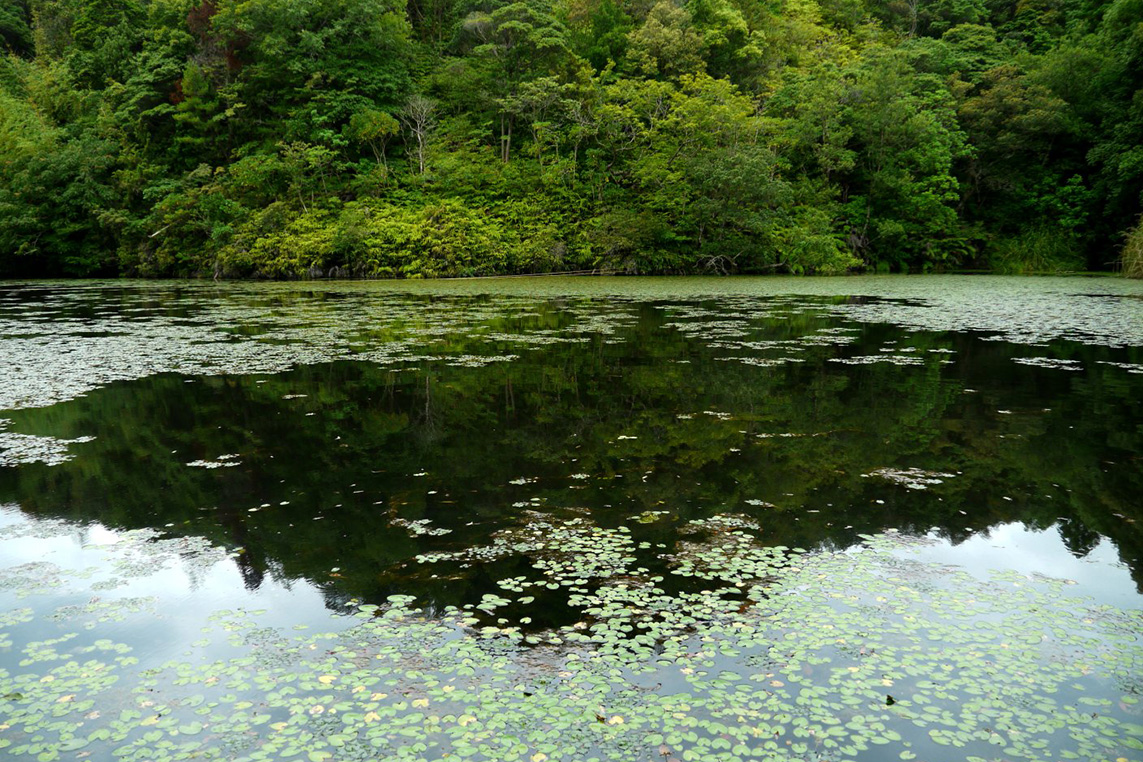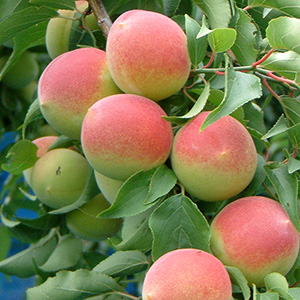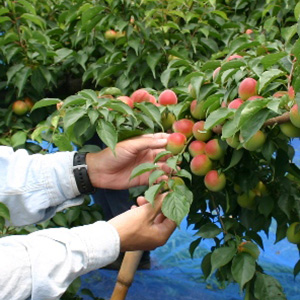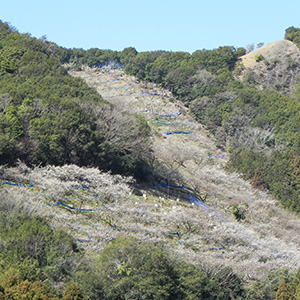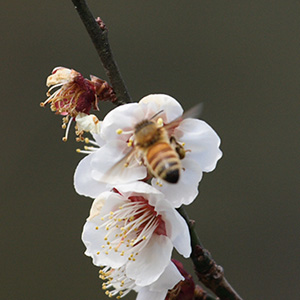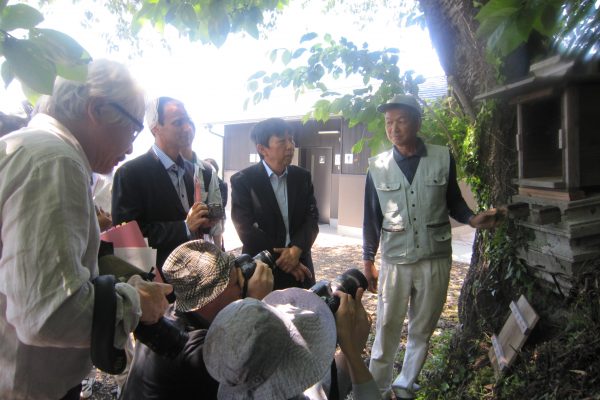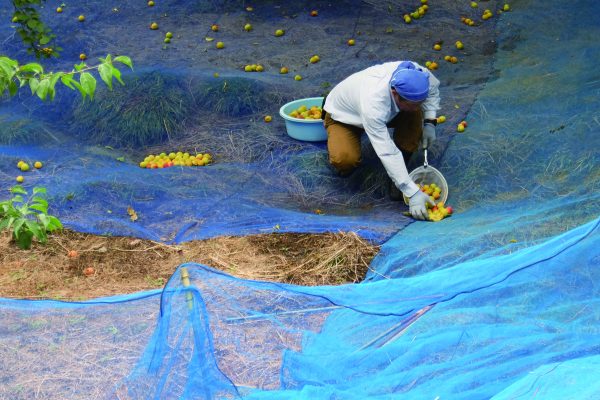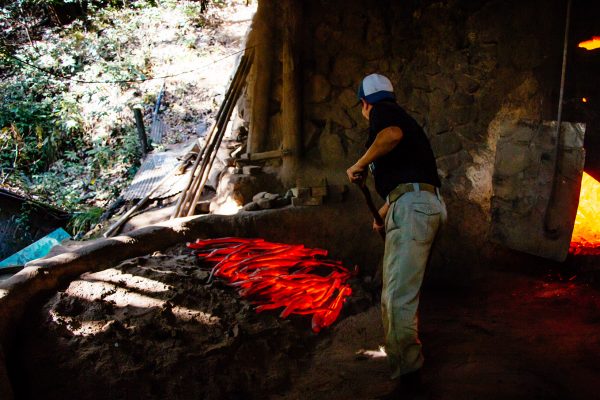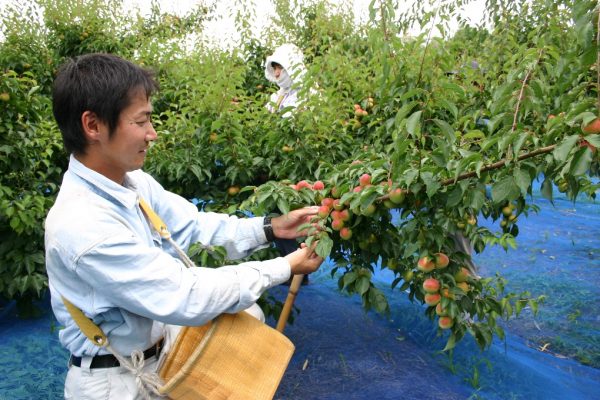MINABE-TANABE UME SYSTEM
A community consisting of two towns named Minabe-town and Tanabe-city in south side of Wakayama prefecture is popular as the best Ume product district, even though the population of this community is only around 80,000.
The community has a world-class Japanese agricultural system that has been nurtured with the culture and landscape created with various wisdoms and innovative ideas accumulated by local forerunner.
A Traditional Ume System Continuing for 400years from Edo Period
4 Secrets You Need to Know
This local area originally has tough conditions, land has poor nutrient elements and small farming flatland because mountains stand very closely to coastline. Neverthless, people in this area has continuously produced high quality Ume over 400years
Didn’t Know That!The Roll of Honeybees that are Neccesary for Clutivation.
Do you know honeybees are neccesary for cultivation?
Most of the kinds of Ume harvesting in Minabe・Tanabe area are pollinated by other type of pollen with planting other types of Ume closely because Ume cannot be self-pollination.
However, it is very hard work if people pollinate hundreds of trees by their own hands.
People use “Japanese Honeybees” to get this system work well.
Ume that reaches full bloom in flowerless early spring is very important supply source of nectar for Japanese Honeybees, make their habitat in the area.
This mutualism between Ume and Honeybee is highly evaluated by GIAHS.
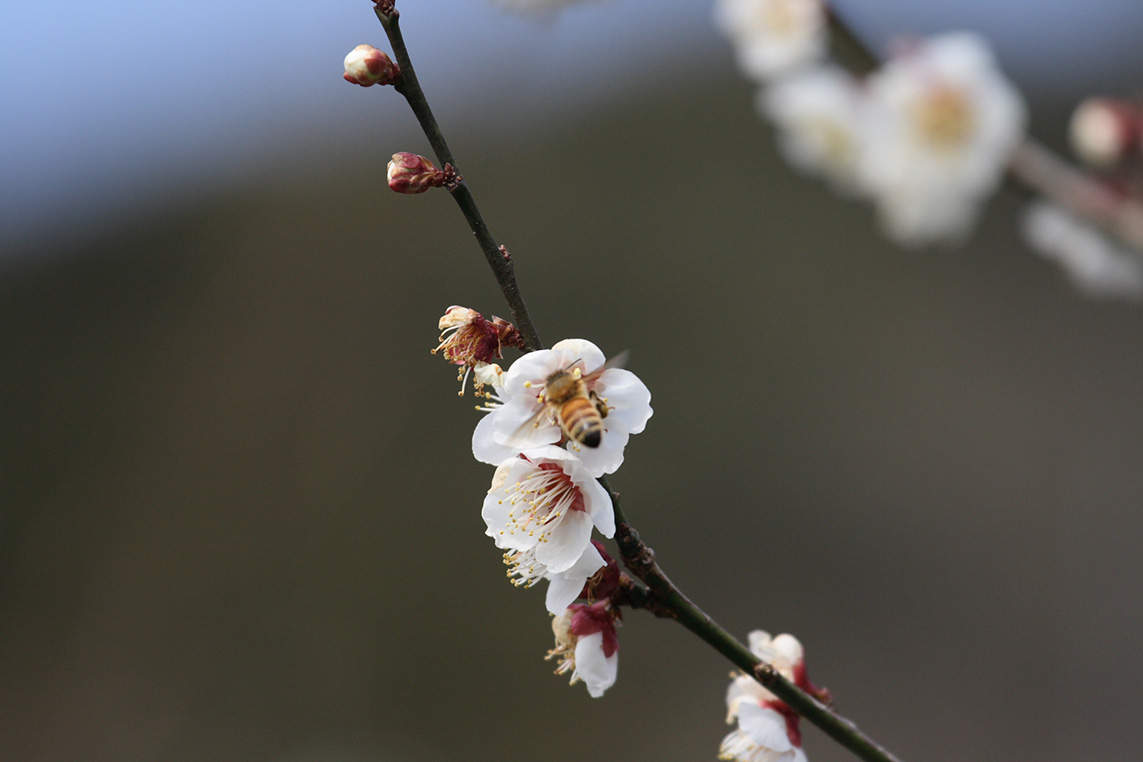
a Japanese Honeybee make their habitat in Japanese wild mountain through the ages.
Regional Level Cooperation!Combinations between Producers and Processors Using a Branded Ume
“Nanko-ume, a kind of Japanese Ume (name as branded Ume-boshi, which is Japanese picked Ume )” is gathered when it reaches full ripeness, but some Ume fruit gets scuff when it dropped on the ground.
In order to solve this problem, people in this area have sucessfully developed a farming method 「gathering Ume with putting up a net on slope face」, and obtained good results, like intact skin and beautiful appearance even Ume fruits are dropped.
In addition, Nanko-ume is cultivated and processed to be high-quality Ume-boshi from harvesting stage.
Most of Ume producers in this area finish by 1st process that is washing and salt-pickliing gathered Ume, called (Shiraboshi).
Processors commercialize with finishing process such as desalting and seasoning.
This “combinations between producers and processors ” create the branded leader named (Nanko-ume).
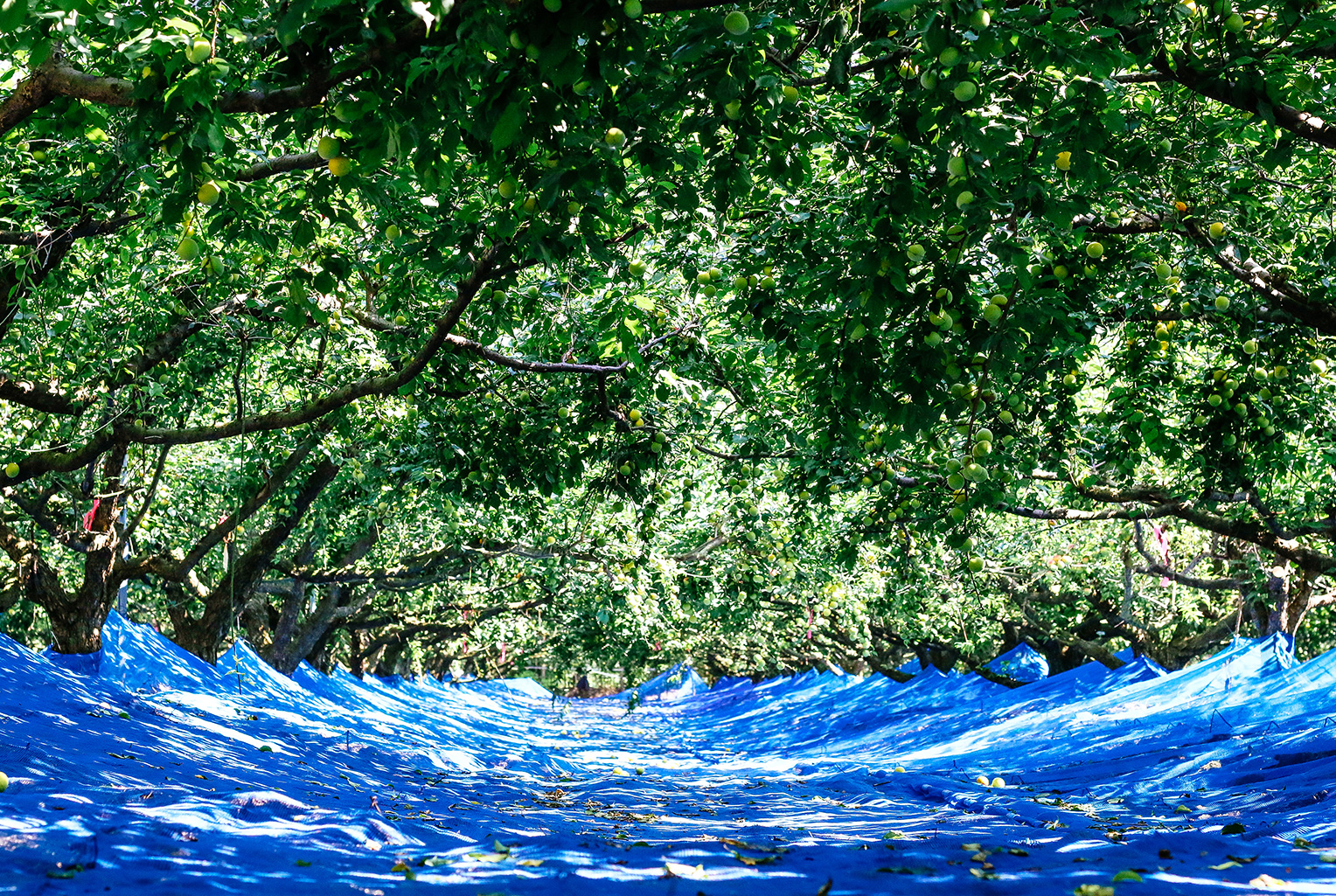
The Role of “Ubame Oak (Quercus Phillyraeoides) Forest”as Basic Ingredient of Kishu Binchotan charcoal
Binchotan charcoal is a high-grade charchoal produced from Ubame oak. “Kishu-Binchotan” is very popular branded charchoal existing in this same area with Nanko-ume.
A process to produce Binchotan, “Sumi-yaki (burning charchoal) “, is also highly evaluated by GIAHS.
Wakayama prefecture is good habitat for Ubame oak as basic igredient of Kishu-Binchotan charcoal, such as Wakayama prefecture set as prefecture of the tree. This Ubame oak forest (coppice forest) is the savior to protect mountains.
A custom (never make whole mountain as Ume orchard to protect coppice forest) has always been protected by people in this Minabe・Tanabe area.
Charchoal makers in this area never cut young tree for next generation.Because charchoal makers selective cut Ubame oak and oak trees, the left trees protect farming lands of mountain from mudslide and rough condition.
These sober management and conditioning from charchoal maker keep heathly condition of mountains, and lead sustainable agriculture and forestry.
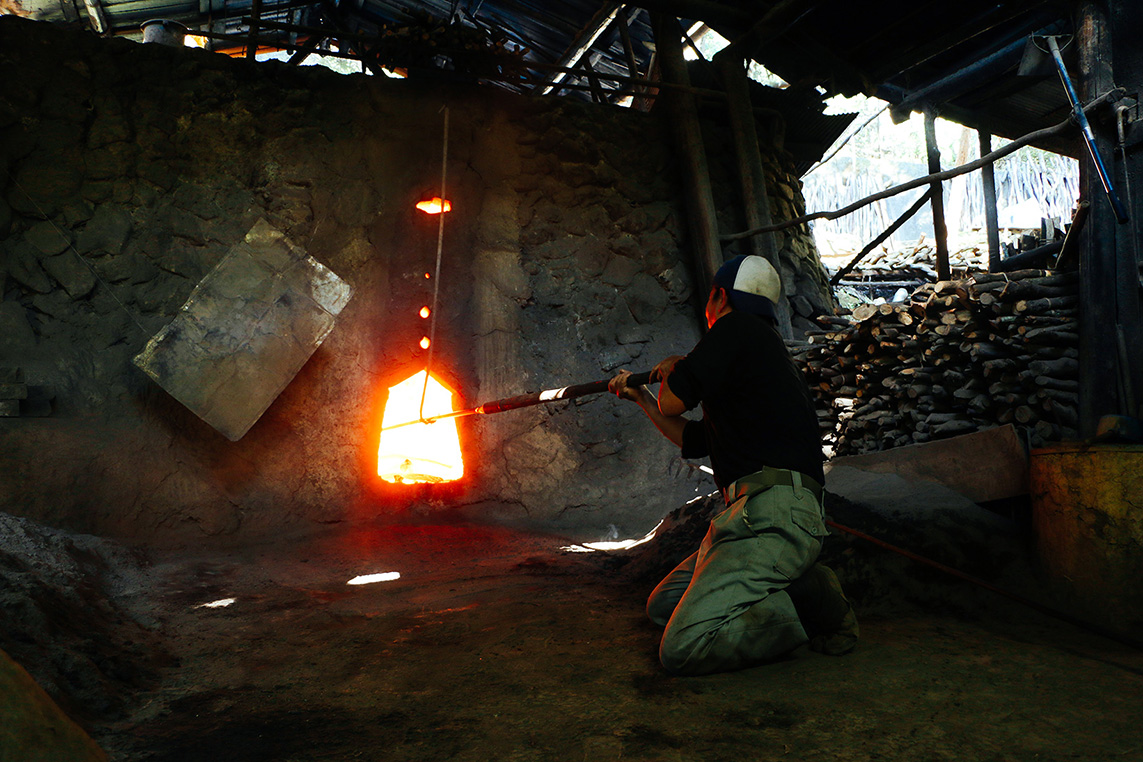
An Ecosystem, which Connect Everything and A Culture Built up by Ume
This closely adjacent area to coastline and mountains has various ecosystem. (Accipiter nisus) and (Accipiter gentilis) make their habitat in Ume orchard and coppice forest. (Butastur indicus),(Pernis ptilorhyncus), or other relative of hawk come to visit in Ume orchard and coppice forest. Rare species (Hynobiun nebulosus) and (Cynops pyrrhogaster) are found at intermountain irrigation ponds and paddy field. A beach in Minabe-town, called Senrinohama, is the place where many (Caretta caretta) come to visit for egg-deposition.
